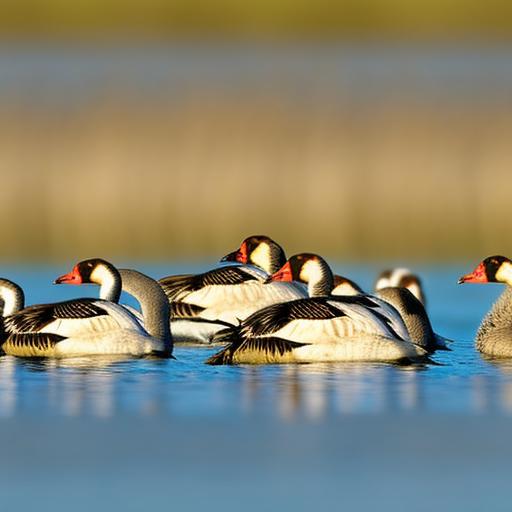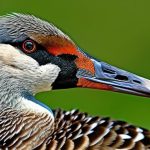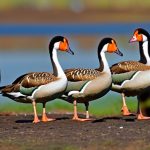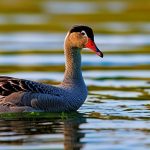Nene Geese, also known as Hawaiian Geese, are a species of goose endemic to the Hawaiian Islands. They are the state bird of Hawaii and hold great cultural and ecological significance. The Nene Goose is believed to have evolved from the Canada Goose, which arrived in Hawaii thousands of years ago. Over time, the Nene Goose adapted to the unique environment of the islands, developing shorter wings and legs compared to its mainland relatives.
The Nene Goose is an important species for several reasons. Firstly, it is a symbol of Hawaiian culture and heritage. The bird holds a special place in Hawaiian mythology and is considered sacred by the native people. Secondly, the Nene Goose plays a crucial role in the ecosystem of Hawaii. It helps disperse seeds and fertilize plants through its droppings, contributing to the overall health and diversity of the island’s flora.
Key Takeaways
- Nene Geese are an endangered species native to Hawaii.
- Breeding Nene Geese is important for their conservation and survival.
- Nene Geese mate for life and typically breed once a year.
- Factors such as habitat loss and predation can affect Nene Geese breeding success.
- Breeding techniques such as artificial insemination and captive breeding have been successful in increasing Nene Geese populations.
The Importance of Breeding Nene Geese
Breeding Nene Geese is essential for the conservation of the species. Due to habitat loss, predation, and other factors, the population of Nene Geese has declined significantly over the years. Breeding programs aim to increase their numbers and ensure their survival for future generations.
Breeding programs play a vital role in conserving the Nene Goose population. These programs involve captive breeding, artificial insemination, and release programs. By carefully selecting breeding pairs and monitoring their offspring, conservationists can ensure genetic diversity and prevent inbreeding. This helps maintain a healthy population and increases the chances of survival for the species.
Nene Geese Breeding Habits
Nene Geese have unique breeding habits that are adapted to their island environment. They typically mate for life and form strong pair bonds. During courtship displays, males will stretch their necks upward and honk loudly to attract females. Once a pair has formed, they will engage in preening and other bonding behaviors.
Nene Geese build their nests on the ground, usually in areas with tall grass or shrubs for protection. The female will lay a clutch of 2-5 eggs, which she will incubate for about 30 days. Both parents take turns incubating the eggs and protecting the nest from predators.
Factors Affecting Nene Geese Breeding
Several factors have contributed to the decline in Nene Geese breeding success. Habitat loss is one of the primary threats to their population. As urbanization and agriculture expand in Hawaii, the natural habitats of the Nene Geese are being destroyed or fragmented. This limits their breeding opportunities and reduces their chances of survival.
Predators also pose a significant threat to Nene Geese breeding success. Introduced species such as feral cats, mongoose, and rats prey on their eggs and young. These predators have no natural predators in Hawaii, making them a serious threat to the survival of the Nene Goose population.
Climate change is another factor affecting Nene Geese breeding. Rising temperatures and changing weather patterns can disrupt their nesting and feeding habits. Extreme weather events such as hurricanes can destroy nests and flood their habitats, further reducing breeding success.
Nene Geese Breeding Season
The breeding season for Nene Geese typically occurs between September and April, although it can vary depending on environmental conditions. During this time, pairs engage in courtship displays and begin building nests. The exact timing of breeding can be influenced by factors such as food availability and weather conditions.
The breeding season for Nene Geese lasts for several months, allowing ample time for pairs to mate, lay eggs, and raise their young. The length of the breeding season ensures that there is enough time for multiple broods to be raised in a single year, increasing the chances of successful reproduction.
Nene Geese Breeding Techniques
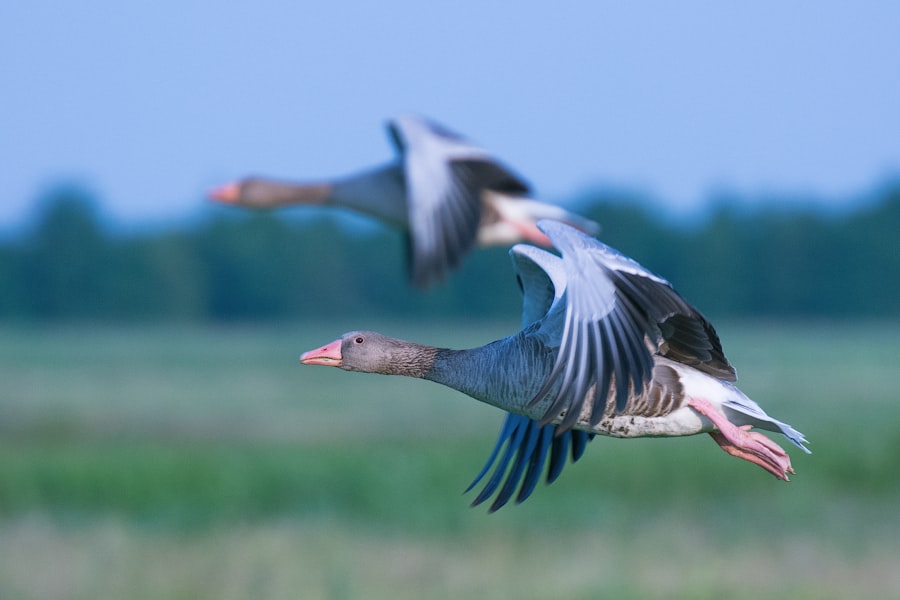
To increase the breeding success of Nene Geese, conservationists employ various techniques. Artificial insemination is one method used to ensure genetic diversity and prevent inbreeding. By carefully selecting compatible pairs and using assisted reproductive technologies, scientists can increase the chances of successful reproduction.
Captive breeding programs are also crucial for Nene Geese conservation. These programs involve breeding Nene Geese in captivity and raising their offspring in a controlled environment. This helps protect the birds from predators and provides them with optimal conditions for breeding and raising their young.
Release programs are another important breeding technique for Nene Geese. Once the birds have been bred in captivity, they are released into suitable habitats where they can establish new populations. These release programs help expand the range of the Nene Goose and increase their chances of survival.
Nene Geese Breeding Challenges
Breeding Nene Geese comes with its fair share of challenges. One of the main challenges is low fertility rates. Nene Geese have relatively low reproductive rates, with females typically laying only 2-5 eggs per clutch. This makes it difficult to increase their population size through natural breeding alone.
Inbreeding is another challenge faced by Nene Geese breeding programs. With a small population size and limited genetic diversity, there is a higher risk of inbreeding and genetic abnormalities. Conservationists must carefully manage breeding pairs to ensure genetic diversity and prevent negative effects on the population.
Disease outbreaks can also pose a significant threat to Nene Geese breeding success. Avian diseases such as avian influenza and avian botulism can spread quickly among the population, causing high mortality rates and reducing breeding success. Regular monitoring and disease prevention measures are essential to protect the birds from these threats.
Nene Geese Breeding Success Stories
Despite the challenges, there have been several successful Nene Geese breeding programs. One notable example is the Nene Recovery Program in Hawaii. This program has successfully bred and released hundreds of Nene Geese into the wild, helping to increase their population size and expand their range.
Another success story is the San Diego Zoo’s Nene Goose breeding program. The zoo has been breeding Nene Geese in captivity for several years, contributing to the conservation efforts of the species. The program has helped increase the genetic diversity of the captive population and has successfully released birds into the wild.
These breeding programs have had a significant impact on the Nene Goose population. By increasing their numbers and establishing new populations, these programs have helped ensure the survival of the species and contribute to its overall conservation.
Nene Geese Conservation through Breeding
Breeding programs play a crucial role in the conservation efforts for Nene Geese. By increasing their population size and genetic diversity, these programs help protect the species from extinction. They also contribute to the overall health and resilience of the ecosystem by restoring a keystone species.
The impact of breeding programs on the Nene Goose population is significant. Through careful management and monitoring, conservationists can ensure that breeding pairs are selected based on genetic diversity and compatibility. This helps maintain a healthy population and reduces the risk of inbreeding.
Furthermore, breeding programs help establish new populations in suitable habitats, expanding the range of the Nene Goose and increasing their chances of survival. By reintroducing birds into areas where they were once abundant, these programs help restore balance to the ecosystem and promote biodiversity.
The Future of Nene Geese Breeding
The future of Nene Geese breeding relies on continued efforts and support from conservation organizations, government agencies, and local communities. It is crucial to address the factors that threaten their breeding success, such as habitat loss, predation, and climate change.
By protecting and restoring their natural habitats, implementing predator control measures, and mitigating the effects of climate change, we can create a more favorable environment for Nene Geese breeding. Continued research and monitoring are also essential to better understand their breeding habits and develop effective conservation strategies.
With ongoing breeding programs and conservation efforts, there is hope for the Nene Goose population. By working together, we can ensure the survival of this iconic species and preserve the cultural and ecological heritage of Hawaii for future generations.
If you’re interested in breeding nene geese, you may also find this article on how to care for goslings helpful. It provides valuable information on raising and nurturing young geese, ensuring their health and well-being. From creating a suitable habitat to feeding and protecting them, this article covers all the essential aspects of gosling care. Check it out here to ensure a successful breeding journey with your nene geese.
FAQs
What are nene geese?
Nene geese are a species of goose that are native to Hawaii. They are also known as Hawaiian geese and are the state bird of Hawaii.
Why breed nene geese?
Breeding nene geese is important for conservation efforts as the species is endangered. By breeding them in captivity, it helps to increase their population and prevent their extinction.
What is the breeding process for nene geese?
Breeding nene geese involves selecting a male and female pair and providing them with a suitable nesting area. The female will lay eggs and incubate them for around 30 days until they hatch. The goslings will then be raised by the parents or by caretakers.
What are the challenges of breeding nene geese?
Breeding nene geese can be challenging as they are a rare and endangered species. Caretakers must ensure that the breeding environment is suitable and that the geese are healthy and well-fed. In addition, there may be genetic issues that need to be addressed to prevent inbreeding.
What is the success rate of breeding nene geese?
The success rate of breeding nene geese varies depending on the breeding program and the individual geese. However, many breeding programs have been successful in increasing the population of nene geese and preventing their extinction.
Meet Walter, the feathered-friend fanatic of Florida! Nestled in the sunshine state, Walter struts through life with his feathered companions, clucking his way to happiness. With a coop that’s fancier than a five-star hotel, he’s the Don Juan of the chicken world. When he’s not teaching his hens to do the cha-cha, you’ll find him in a heated debate with his prized rooster, Sir Clucks-a-Lot. Walter’s poultry passion is no yolk; he’s the sunny-side-up guy you never knew you needed in your flock of friends!

